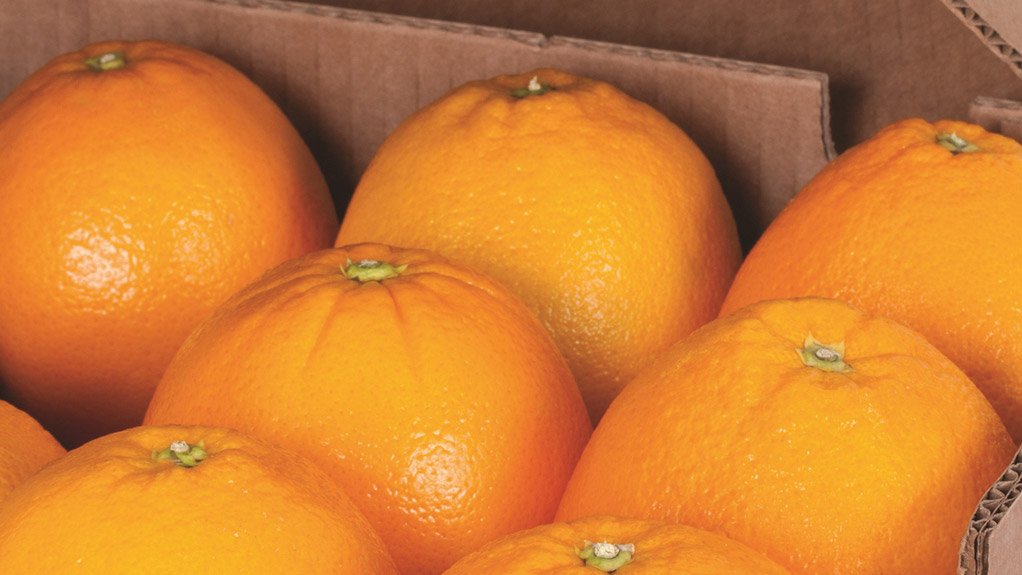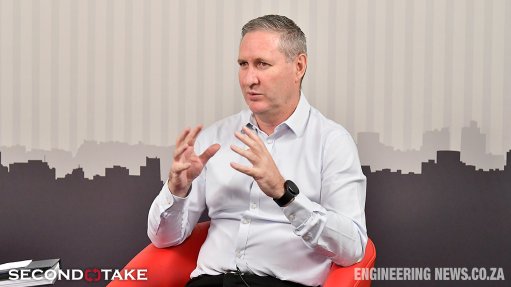Opinion: Could South Africa’s logistics crisis derail the citrus sector’s stellar growth trajectory?
In this opinion article, Nedbank head of agriculture John Hudson writes about how logistics constraints are hampering the growth of South Africa's citrus sector.
A little-known, positive fact in a country that tends to focus on the negative is that South Africa is the second-biggest exporter of citrus in the world after Spain, the largest in the southern hemisphere and the global leader in long-distance exporting.
Exports account for 95% of earnings from citrus, which overtook wine as South Africa’s largest agricultural export in 2010. The citrus sector is our prime value earner in terms of exports and responsible for the employment of some 120 000 citizens, making it the biggest employer in the agricultural space.
CITRUS – THE SHINING STAR OF OUR ECONOMY
The exceptional performance of the citrus industry saw production grow 25% between 2019 and 2020, making the sector one of the success stories in a dismal year for economic growth. With a few weeks of the 2021 export season left, output is expected to grow another 6% from 150-million cartons produced in 2020 to 159-million cartons this year. This is slightly down on the projected 163-million cartons, largely due to smaller fruit than anticipated, and the stronger rand will mean lower returns to the farms.
That said, the citrus industry continues to be a major contributor to the country’s employment numbers, balance of payments and economy. This is particularly noteworthy given the massive challenges the sector has had to navigate this year, including the violent unrest and cyberattacks on our ports, which resulted in major logistical setbacks at a crucial time of the harvest and export season. In true South African fashion, citrus sector players ‘made a plan’ and the entire value chain deserves a resounding round of applause.
LOGISTICS NEED URGENT ATTENTION
But, long term, there is increasing concern about the substantial impact that South Africa’s failing logistics infrastructure could have on the sector and its significant contribution to our economy. This will become more pronounced if not addressed without delay, as citrus output is expected to grow to 200-million cartons in the next five years and to 260-million cartons by 2030. The large-scale geographic spread of our citrus industry means that some growers truck fruit more than a thousand kilometres to their nearest port, so the road infrastructure presents the first challenge. In particular, roads in and around Durban’s port become heavily congested, particularly over the past two years when bumper grain harvests have coincided with record citrus harvests.
Then came the unrest in July and safety on the roads has become a new concern, as well as the impact the unrest had on exports. The citrus sector’s major setback was the inability to ship, which means lost market opportunity, additional transport, labour and storage costs, and potential quality claims if the fruit has been compromised from the subsequent break in the cold chain.
However, road hindrances are minor compared to those of the port precincts: In the World Bank and IHS Markit's Comparative Assessment of Container Port Performance, South Africa's ports of Cape Town, Gqeberha, Durban and Coega were at the bottom of 351 ports in various countries. Our ports operate at around 30% of international norms, which means that all of them are processing a third of what they could in a day in terms of loading and offloading containers. Add to this the pandemic-induced disruption in global shipping lines, growing container ship shortages and costs, theft of Transnet infrastructure, and most recently, the port cyberattacks, and we have a challenging situation at our ports that threatens the outstanding efforts of the South African citrus industry.
IS THERE A PLAN?
The good news is that there have been coordinated efforts between significant logistics role-players such as Transnet and agricultural organisations, to address the challenges our exports face on their way to global markets. For example, about 80% of South Africa’s agricultural produce is transported by road, but a move from road to rail will require increased investment and security at rail lines to eliminate the constant theft of Transnet infrastructure. However, the Citrus Growers’ Association of Southern Africa (CGA) is working closely with Transnet Freight Rail to increase rail transportation of agricultural crops.
In addition, the CGA has developed a medium- and long-term plan to alleviate the pressures around logistics, which includes finding alternatives to Transnet-operated ports, sourcing additional specialised reefer ships during citrus season, and a dedicated specialised reefer ship service between Cape Town and the European Union and United Kingdom. Reefer ships are refrigerated cargo ships typically used to transport goods where the cold chain must not be interrupted. They are also quicker to load, making their turnaround times in South African ports shorter.
The CGA has also identified an urgent need for increased private sector participation, a view that public sector stakeholders appear to agree with as they are initiating discussions between government, logistics role-players and potential investors to mobilise investment in the ports. In fact, the Department of Public Enterprises recently announced a master plan for the Port of Durban to invest R100 billion worth of potential private investments into the port infrastructure, terminals and freight infrastructure over the next 10 years. The plan aims to fast-track the growth in the port’s annual container handling capacity, with significant berth deepening and widening to allow for radically increased docking for the largest vessels in the world.
The plan also sees the South African National Defence Force’s naval base and the bulk terminal, which houses the petroleum, chemicals, vegetable oils and lubricants operations, relocating to Richards Bay, which would become an industrial port. The plan also includes upgrades to the road and railway network around the port and city to limit the high volumes of trucks causing bottlenecks, and the Cato Ridge precinct is to be developed into a private-sector-driven industrial cluster, linking the N3 freeway to the railway from the port. So, there are signs that we’re moving in the right direction at last.
For the citrus industry, as with the rest of the agricultural sector, it is imperative to continue to identify areas that need improvement and engage with key logistics role-players and government to find solutions. As always, Nedbank will support the entire agricultural chain throughout this process and will assist wherever possible. Logistics are the life blood of the success of our agricultural export industry and should be a long-term and strategic focus area for South Africa.
Comments
Press Office
Announcements
What's On
Subscribe to improve your user experience...
Option 1 (equivalent of R125 a month):
Receive a weekly copy of Creamer Media's Engineering News & Mining Weekly magazine
(print copy for those in South Africa and e-magazine for those outside of South Africa)
Receive daily email newsletters
Access to full search results
Access archive of magazine back copies
Access to Projects in Progress
Access to ONE Research Report of your choice in PDF format
Option 2 (equivalent of R375 a month):
All benefits from Option 1
PLUS
Access to Creamer Media's Research Channel Africa for ALL Research Reports, in PDF format, on various industrial and mining sectors
including Electricity; Water; Energy Transition; Hydrogen; Roads, Rail and Ports; Coal; Gold; Platinum; Battery Metals; etc.
Already a subscriber?
Forgotten your password?
Receive weekly copy of Creamer Media's Engineering News & Mining Weekly magazine (print copy for those in South Africa and e-magazine for those outside of South Africa)
➕
Recieve daily email newsletters
➕
Access to full search results
➕
Access archive of magazine back copies
➕
Access to Projects in Progress
➕
Access to ONE Research Report of your choice in PDF format
RESEARCH CHANNEL AFRICA
R4500 (equivalent of R375 a month)
SUBSCRIBEAll benefits from Option 1
➕
Access to Creamer Media's Research Channel Africa for ALL Research Reports on various industrial and mining sectors, in PDF format, including on:
Electricity
➕
Water
➕
Energy Transition
➕
Hydrogen
➕
Roads, Rail and Ports
➕
Coal
➕
Gold
➕
Platinum
➕
Battery Metals
➕
etc.
Receive all benefits from Option 1 or Option 2 delivered to numerous people at your company
➕
Multiple User names and Passwords for simultaneous log-ins
➕
Intranet integration access to all in your organisation





















